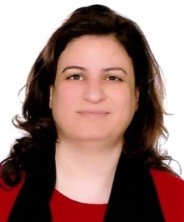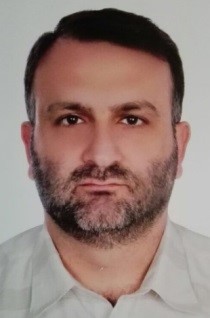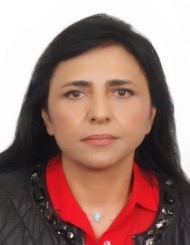|

Dr. Elie Karam
IDRAAC
|
9:15-9:30: Prevalence of Suicidal Behavior in the World and in Lebanon: Evidence from the World Mental Health Surveys
Based on the World Health Organization (WHO)’s estimates, Lebanon has far below the global mean of completed suicides (0.2% in Lebanon as compared to 1.4% globally). In contrast, nationally representative data from Lebanon and as part of the World Mental Health Surveys (WMH) that IDRAAC conducted revealed that Lebanese suicide attempts were almost the mean value of suicide attempts in all surveyed countries (17 countries) (2% in Lebanon versus 2.7% in the total sample surveyed). When comparing ratios of WHO estimates of completed suicides to WMH estimates of suicide attempts across different countries (France, Belgium, Germany, Italy, South Africa, Spain and the United States), Lebanon had the lowest ratio possibly due to under- or misreporting. A good possibility could be underreporting or misreporting and another one could be unusual protection against completed suicide in Lebanon: both issues need careful research.
|
|
Dr. Georges Karam
IDRAAC
|
9:30-9:45: Risk Factors of Suicide in Lebanon and the World
Suicide is a major public health concern. Several risk factors exist for suicidal behavior. In this presentation, we will present extensive data from Lebanon and the world where we looked at specific risk factors. We looked at risk factors in Lebanon, the Middle East and the World. Also we studied the interaction of temperament on suicidal behavior, the effect of parent psychopathology, the effect of childhood adversities, the effect of war exposure, the effect of traumatic events and finally the effect of psychotic experiences on suicidal behavior. A clear association was present among all those risk factors. From a public health perspective, the strong and consistent associations between mental disorders and suicidal behavior suggest that suicide prevention efforts should include a focus on screening and treating mental disorders in both developed and developing countries.
|
|

Ms. Mia Atoui
Embrace

Dr. Rabih Chammay
MOPH
|
9:45-10:00: Suicide Prevention Hotline in Lebanon—Embrace Lifeline
Suicide is quickly becoming a major public health concern in Lebanon, with one person dying of suicide every 2.5 days and one person attempting suicide every 6 hours. In 2014, suicide rates witnessed a 30% from the previous year, and a similar prevalence rate has been reported in 2017. Despite this growing concern and that suicide cases are subjected to underreporting in Lebanon, few preventive measures exist to tackle the issue of suicidality in Lebanon. This growing public health issue has been recognized in the national strategy for mental health (Mental Health and Substance Use-Prevention, Promotion and Treatment-Strategy for Lebanon 2015-2020’) launched by the Ministry of Public Health (MoPH), with a strategic objective aiming at: “Implementing an evidence-based national framework for prevention and monitoring of suicide”. Embrace is contributing to building this national framework through the key step of launching the first national helpline for suicide prevention and emotional support, in partnership with the MoPH. This presentation, first gives an overview for rates of suicide and mental illness in Lebanon, then reviews the evidence on suicide helplines, , and finally elaborates on the establishment of Embrace LifeLine which provides over-the-phone suicide risk assessment, emotional support and referrals to necessary community resources.. The Lifeline was established in 2017, within a framework of a non-interventionist approach, under the guidance of the Centre for Research and Intervention for Suicide and Euthanasia in Canada (CRISE). September 2017, saw the soft launch of the helpline, operating from 12 pm till 2 am, and receiving to date over 80 calls. Preliminary data was used to improve services, and develop an electronic data-capturing plan.
|
|

Dr. Ghada Abou Mrad
MOPH

Ms. Edwina Zoghbi
MOPH
|
10:00-10:15: Findings on Suicidality from the Mental Health Registry in Lebanon
Background: There is no systematic data collection on mental health in Lebanon. A mental health registry was established and piloted in 2017 to identify trends in mental health disorders and treatment and inform decision-making. This registry includes a component on suicidality (suicidal ideations and attempts).
Methodology: Data was collected from 9 psychiatrists using a software specifically developed for this project. Every patient presenting for a first psychiatric consultation was included, except those seeking opioid substitution therapy (another system already in place). Data was collected on socio-demographic characteristics, mental health diagnosis and interventions provided. Descriptive analysis was performed and results are reported as numbers and percentages. Suicidality was defined as suicidal ideations and/or attempts.
Findings: A total of 779 patients from 32 facilities between 1 September 2016 and 28 February 2017 were included in the registry, covering all governorates except the North and Akkar. Amongst this sample, 116 had suicidal attempts (15%). From the latter, 61% were females. Around 10% were less than 18 years of age while 58% were between 18 and 34 years of age. Referrals reported were mainly from other medical professionals (34%), followed by non-governmental organizations (31%), and family and friends (23%). As for diagnosis, 44% had depression, 20% had schizophrenia, and 15% had anxiety. The majority (93%) were provided psychotropic medications, 44% referred to psychotherapy, and 16% referred to hospital admission.
Conclusion: This registry provided initial information on socio-demographics, diagnoses, and treatment of persons with suicidality presenting to the psychiatrist. Additional data is needed to be able to generalize the findings. An extension plan for the registry is currently under preparation following an evaluation of the pilot phase.
|
|

Ms. Hilda Harb
MOPH
|
10:15-10:35: Hospital Based National Deaths Notification System and Suicide Data
Until 2017, reliable and complete Information on causes of death were lacking in Lebanon. Reasons are many, and highly related to the quality of medical information recorded on the certificate of death. Many attempts were being taken to improve the form of the certificate of death and automate its database, but many barriers were considered including the lack of sufficient staff and the technical and administrative requirements at the Ministry of Interior and Municipalities, which is the official mandated body to issue the certificate. Also, we are quite aware that certain causes of death due to their sensitive nature, and the taboo associated with them might not be recorded accurately on the official certificate of death, which makes a hospital death notification with all medical associated causes, more useful. Thus, MOPH has started since 2016 to plan a Hospital Based Mortality Notification System, gathering de-identified medical information on all deaths occurring at a hospital or reaching the hospital, and coded using the ICD 10th revision. To that end, and in collaboration with the Syndicate of Hospitals, focal points were selected from all hospitals (public and private), and were trained in the last quarter of 2016 on a new system developed by WHO and based on the actual certificate of death fields. We now have information about the deaths that reached the hospitals in 2017 in Lebanon, by Nationality, place of death, place of origin, place of residence, gender, age and cause of death, including suicide. We will also be able to estimate the proportion of deaths that end up in a hospital setting in Lebanon, in addition to the completeness of death reporting. Furthermore, as one of the important landmarks in the improvement of maternal and child health, the MOPH initiated in 2011 a hospital based surveillance system of all maternal deaths, neonatal deaths, all births and birth defects, as well as other important variables. Reporting used to be on a paper form and by fax. Currently, the Vital Data Observatory (previously known as the Maternal Neonatal Mortality Notification System) follows online reporting from all hospitals in the country. This system generates important indicators such as maternal mortality ratio, low birth weight rate, cesarean delivery rate, and others, which can be segregated by many variables including nationality. We are planning during the year 2018:
- 1-To improve on the quality of hospital mortality reporting, including training the medical doctors on the proper certification of causes of death, and initiating routine annual refresher training for focal points.
- 2-To merge all information channels regarding vital events into one online reporting system between the hospitals and the MOPH.
|
|

Judge John Azzi
Ministry of Justice
|
11:05-11:20: How to Improve and Analyze the Cause of Death in Lebanon
Judge Azzi will be discussing the current situation of the cause of death and suicide reporting in Lebanon from a legal standpoint and will present possible improvement methods. Judge Azzi stressed that “suicide is unacceptable in all the languages on earth,” adding that the Lebanese law punishes whoever drives any person in any way to commit suicide or helps him kill himself.
“Suicide is killing and killing oneself is a crime, and any accomplice is punished as being a criminal,” he stated, pointing out that a medical doctor can never confirm a death as a suicide, but through investigation, this can be confirmed. “Some crimes are being covered as suicide,” he said.
The judge added that “according to the latest statistics by the Internal Security Forces conducted in 2018 (from 01/01/2018 until 15/02/2018), 25 suicide cases were reported in Lebanon, 14 of which are Lebanese, and 11 of other nationalities, including domestic workers.” These cases include shooting, hanging, falling off a high floor and poisoning, but they cannot be confirmed
according to Azzi.
He continued by saying that in the year 2014, 143 suicide cases were registered, where the rate of men was higher than that of women, with an age ranging between 25 and 40 years, stating however that this number cannot be considered final, given the number of unreported suicide attempts and completed suicides, where the cause of death gets changed for social or religious reasons. In this regard, he stressed the importance of a helpline in order to fight against suicide.
|
|

Dr. Bilal Sablouh
Ministry of Justice
|
11:20-11:35: How is Suicide Diagnosed in Lebanon
Suicide is increasing in Lebanon, Forensic Medicine is one of the main expertises that can collect and analyze evidences, and give opinion to help the judiciary system to reach the right decision in such cases.
In this talk, the following topics were presented:
- Organization of Forensic Medicine in Lebanon
- The role of Forensic Medicine in suicide cases
- Complementary Forensic laboratory Assistance
- Lebanese context
- Challenges and Recommendations
|
|

Dr. Lina Oueidat
National ICT Coordinator
|
11:35-11:50: Suicide Registry in Lebanon and the Death Certificate: Comparative Analysis of other Countries
Objectives: Based on an experience of an evaluation conducted between WHO and the Ministry of Interior in 2000 , and on a comprehensive Study with the support of WHO Regional Office EMRO and based on our experience on Data analysis and Data Integrity and information System assessment , a huge work was conducted on exhaustive Death Certificates data over 3 years. Still we are having problems in the integrity and in the clarity of the Data, the type of the death certificate, the culture of the certifiers regarding the Death in General, and the Suicide in particular. Based on the medical, administrative, and Vital Statistics team at WHO advise, recommendations will be re-iterated for the Authorities in order to achieve coordination regarding this issue, a Death Certificate based on the Support of WHO EMRO has been prepared and will be publicly proposed for final review and comments to the concerned authorities, the first time.
A detailed analysis on 65, 000 detailed death Certificates (40 fields/certificate) Years 1997-1998-1999 and a sample of analysis on Death Certificates in 2015, 2016 were reviewed and analyzed with a multi sartorial point of views.
|
|

Judge Dr. Mohammad Al Noukari USJ
|
12:40-12:50: Suicide And Islam
Sheikh Dr. Mohammad Al Noukkari tackled the issue of suicide from the perspective of Islam, noting that “the Quran texts warn the people against any act that could cause death and that the fate of whoever commits suicide is eternal suffering on Judgment Day.”
He also explained that “Islam, through its principles and teachings, links the human being to a network of daily relationships, whether in his individual or collective prayers, and familial and social relationships that prevent him from seeking isolation and abusing alcohol and drugs.
These relationships, the sheikh continues, have made the suicide rate among Muslims less than other rates in the world, according to statistics.
|
|

Father Georges Dimas
Orthodox Archdiocese of Beirut
|
12:50-1:00: Suicide And Christianity
Father George Dimas, Chancellor of the Orthodox Archdiocese of Beirut and Rector of the Orthodox Schools in Beirut, discussed the suicide from a Christian perspective, speaking of the Orthodox Church’s position towards suicide and recalling the Lord’s commandment “Thou shall not kill”.
He also tackled the development of the Church’s historical perspective in this regard, as well as the scientific perspective.
“Some of the fathers of the Orthodox Church supported suicide in some cases, while others opposed it at all cases,” he said.
Father Dimas summarized the position of the church through a series of pastoral recommendations, including showing mercy to the one who commits suicide and to care for his/her family, stressing that science has proved that the individual who commits suicide lost his/her capacity to make appropriate judgments, since the majority of suicide cases result from a defect in mental functions that limit lucid behavior and thus deserves prayers like those who did not commit suicide.
Below are the major points discussed during his intervention:
The Lord’s commandment “Thou shall not kill”.
- Suicide: A historical perspective of the Church.
- Suicide perceived from a scientific perspective.
- Suicide perceived from a patristic perspective.
- 3.1.Fathers of the Orthodox Church who have supported suicide to preserve chastity
- 3.2.Fathers of the Orthodox Church who opposed suicide to preserve chastity
- 3.3.Saints who committed suicide.
- Pastoral recommendations
- Conclusion
|